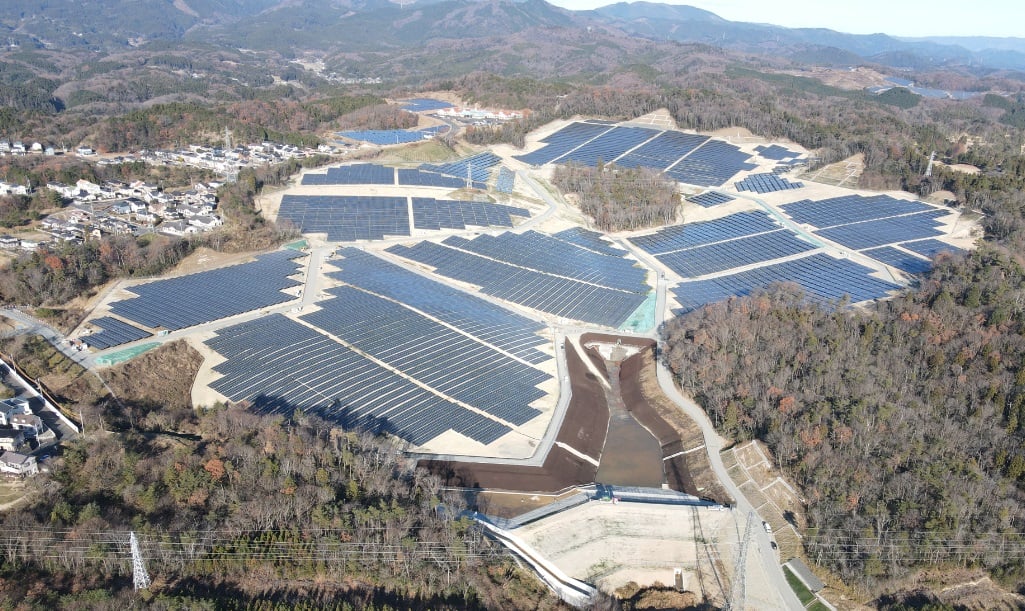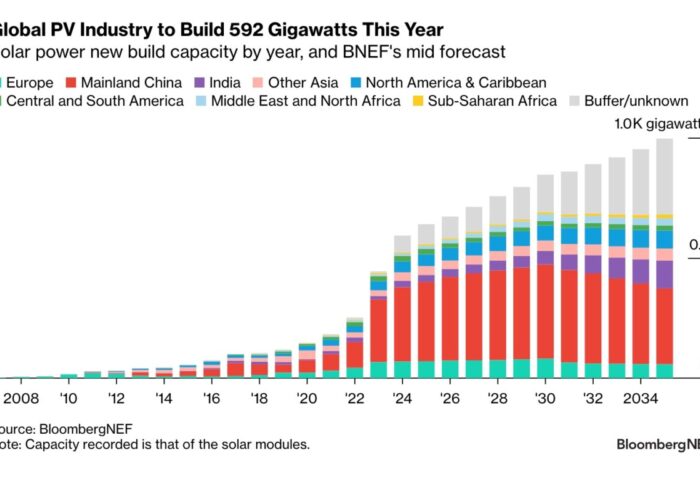
Japan will need to have 689GW of total installed capacity for solar and wind power generation by 2050 to reach the goal of net zero, according to a study conducted by BloombergNEF (BNEF).
BNEF’s net zero scenario details the breakdown of power generation in Japan by 2050 if the Asian country needs to achieve its net zero goal. It needs to increase its installed solar and wind power generation capacity by more than eight times from 81GW in 2021 to 689GW in 2050. With such capacity, solar and wind generation will account for 79% of the electricity supply while nuclear will provide 11%.
Unlock unlimited access for 12 whole months of distinctive global analysis
Photovoltaics International is now included.
- Regular insight and analysis of the industry’s biggest developments
- In-depth interviews with the industry’s leading figures
- Unlimited digital access to the PV Tech Power journal catalogue
- Unlimited digital access to the Photovoltaics International journal catalogue
- Access to more than 1,000 technical papers
- Discounts on Solar Media’s portfolio of events, in-person and virtual
The rest of the demand will be met by hydro, geothermal and thermal power plants equipped with carbon capture and storage.
To reach the net zero goal, investment in energy supply and demand in Japan will need to reach an annual average of US$239 billion, or about 3.8% of the expected gross domestic product.
“Japan spent US$1.8 trillion on fossil fuel imports over 2010-2022, equivalent to an annual average spending of more than 3% of GDP. If Japan can redirect some of this expenditure toward deployment of mature clean technologies such as solar, wind and electric vehicles, it would create more domestic economic opportunities while reducing emissions and strengthening its energy security,” said David Kang, head of Japan and Korea research at BNEF.
BNEF also suggested some ways for Japan to accelerate energy transition. For example, it needs to reduce the hurdles that renewable developers face by increasing the transparency of grid connection processes, as well as shortening and simplifying permitting processes. Renewables deployment can also be accelerated by organising local government-led reverse auctions with guaranteed access to land, or the seabed in the case of offshore wind, and grid connections.
Currently, fossil-fuel power generation accounts for more than 70% of Japan’s electricity generation, according to BNEF. But the study also suggests that instead of pursuing costly and unproven approaches such as retrofitting existing coal power plants for co-firing with ammonia, Japan can reply on the accelerated deployment of geothermal, solar and wind.
PV Tech Premium reported that there are a multitude of challenges and issues Japan must first overcome regarding electricity generated from renewable sources. For example, the feed-in premium (FiP) scheme has yet to meet the government’s expectations. There have been two auction rounds since the introduction of the FiP and both have been undersubscribed.
Japan’s grid capacity was not able to keep up with the development of renewable energy. In January this year, the Okinawa Electric Power Company announced it would have to apply curtailment measures due to high solar radiation levels and low energy demand. Other regions, such as Kyushu, Tohoku, Shikoku, Chugoku and Tokyo and especially Hokkaido also face similar curtailment.







